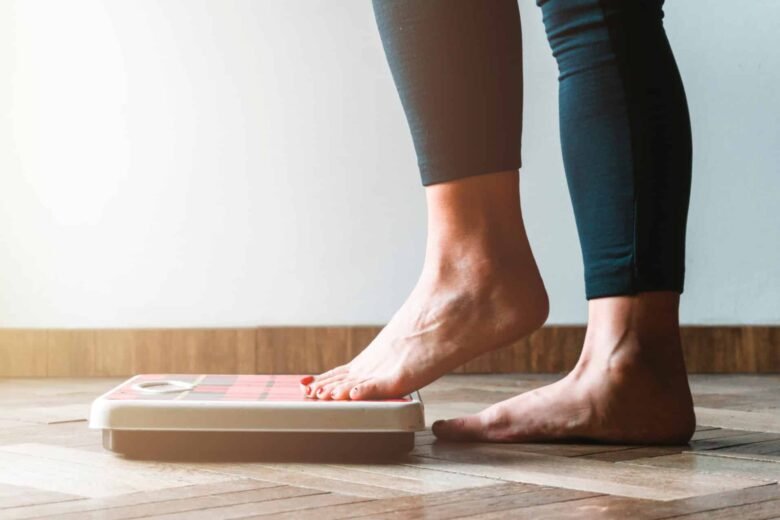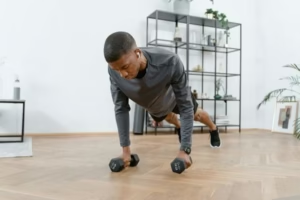Introduction to Home Workouts
In recent years, home workouts have gained significant popularity, becoming an essential part of many individuals’ fitness journeys. The convenience and accessibility of exercising in one’s living space allow people to engage in physical activity without the constraints of a gym environment. This trend has been further amplified by busy schedules and external circumstances that have limited access to traditional fitness facilities.
Home workouts offer a flexible solution that can be tailored to fit various lifestyles and fitness levels. Whether you are a beginner just starting your fitness journey or a seasoned athlete looking to maintain strength, there are numerous effective exercises that can be performed in the comfort of your home. From bodyweight exercises to utilizing minimal equipment, individuals can easily adapt their routines to align with their personal goals, available space, and available time.
The rise of digital fitness platforms and online resources has also contributed to the popularity of at-home workouts. Individuals can find a wide variety of guided sessions, workout plans, and instructional videos that cater to different demographics and preferences. This accessibility has encouraged many to explore new forms of exercise, such as yoga, Pilates, or high-intensity interval training (HIIT), all of which can be effectively practiced within a home setting.
Moreover, home workouts allow for a personalized environment where individuals can feel comfortable and motivated. The absence of judgment that often accompanies gym settings enables many to focus on their progress without distractions. As the global landscape continues to evolve, the appeal of home workouts remains robust, making it an excellent option for anyone seeking to lose weight and get stronger while managing their time effectively.
Benefits of Weight Loss and Strength Training
The combination of weight loss and strength training presents numerous benefits that extend beyond aesthetic improvements. One of the most significant advantages of losing weight is its positive impact on overall health. Excess body weight is associated with various health risks, such as heart disease, diabetes, and hypertension. By shedding pounds, individuals can reduce these risks, leading to increased longevity and a better quality of life. Additionally, achieving a healthy weight often improves coordination and mobility, making daily activities easier and more enjoyable.
Beyond health improvements, weight loss can significantly boost confidence. As individuals achieve their weight loss goals, they often experience enhanced self-esteem and body image. This newfound confidence extends to various aspects of life, including personal relationships and professional endeavors, allowing individuals to feel more empowered in their daily routines.
On the other hand, strength training plays a crucial role in enhancing muscle mass and metabolism. Increasing muscle mass not only contributes to a more toned physique but also facilitates a higher resting metabolic rate. This means that even at rest, individuals with more muscle burn more calories, making it easier to maintain weight loss over time. Furthermore, strength training improves functional fitness, enabling individuals to perform daily tasks with greater ease and efficiency. This is particularly important as one ages, as maintaining strength can help preserve independence and reduce the risk of injury.
When weight loss and strength training are combined, the effects are complementary and synergistic. As individuals lose weight, they can engage in more vigorous strength training, and with improved strength, they are often motivated to continue their weight loss journey. This interplay fosters holistic health improvement, where individuals not only achieve their physical goals but also enjoy a healthier lifestyle, marked by enhanced physical capabilities and improved self-confidence.
Getting Started: Setting Realistic Goals
Setting realistic and achievable fitness goals is an essential first step in any weight loss or strength-building program. The importance of having concrete objectives cannot be overstated, as they provide direction, motivation, and a measurable way to assess progress. One effective method for creating these goals is to utilize the SMART criteria, which stands for Specific, Measurable, Achievable, Relevant, and Time-bound.
When setting your goals, begin by identifying what you specifically want to achieve. Instead of aiming to “get fit,” specify a target, such as “losing 10 pounds in three months” or “performing ten push-ups without stopping.” This specificity helps maintain focus and clarity throughout your journey. Following this, ensure your goals are measurable; tracking your progress allows you to see how you are advancing toward your objectives. Utilize tools such as fitness apps, journals, or progress photos to maintain an accurate account of your achievements.
The attainability of your goals is equally important. While ambitious goals can be motivating, they should also be realistic based on your current fitness level and lifestyle. Setting an overly ambitious goal may lead to frustration or burnout, while more achievable targets foster a sense of accomplishment and encourage consistency. Furthermore, ensure that your goals are relevant to your broader personal objectives. For example, if your primary aim is to improve overall health rather than aesthetics, your fitness goals should align accordingly.
Finally, establishing a time-bound framework enhances commitment. For instance, setting deadlines for each target motivates you to stay on track while enabling periodic evaluations of your progress. In conclusion, setting realistic and structured fitness goals utilizing the SMART framework is crucial for effective weight loss and strength-building endeavors. Tracking your progress not only helps maintain motivation but also allows for necessary adjustments to your routine, ensuring continued advancement on your fitness journey.
Essential Equipment for Home Workouts
Creating an effective home workout environment is crucial for those looking to lose weight and get stronger. The right equipment can enhance your training, providing versatility and accommodating various fitness levels and goals. Here are essential items that can facilitate your workout routine from the comfort of your own home.
Resistance bands are among the most versatile pieces of equipment available. They come in various resistance levels and can be used for strength training and rehabilitation exercises. Their lightweight and compact nature make them easy to store and transport, allowing for a full-body workout with minimal space requirements.
Dumbbells are another essential item for home workouts. They enable a wide range of exercises, targeting various muscle groups effectively. Adjustable dumbbells can be particularly beneficial as they allow you to modify the weight according to your fitness level, thereby encouraging progressive overload in your strength training regimen.
Kettlebells are increasingly popular for home workouts due to their multifunctionality. They can be used for both strength training and cardiovascular exercises, offering a dynamic approach to fitness routines. A single kettlebell can be used for numerous exercises, such as swings, goblet squats, and deadlifts, making it a space-saving option.
A yoga mat is also essential for any workout routine. It provides a comfortable surface for exercises that require stability, such as yoga and floor workouts. Additionally, it can help prevent injuries by providing cushioning during high-impact exercises.
For individuals not looking to invest in equipment, bodyweight exercises serve as excellent alternatives. Movements such as push-ups, squats, lunges, and planks can effectively build strength and endurance without requiring any tools. Incorporating these exercises into your routine can yield significant fitness benefits while using minimal space.
Warm-Up and Cool Down Routines
Warming up and cooling down are essential components of any exercise regimen, especially when performing home workouts. These routines not only enhance performance but also significantly reduce the risk of injury. A proper warm-up prepares the body for physical activity by gradually increasing heart rate, loosening muscles, and elevating the body temperature, making the muscles more pliable. Conversely, cooling down assists in the recovery process by facilitating a gradual return to baseline physiological levels and preventing muscle soreness.
An effective warm-up routine at home can include dynamic stretches and movements that mimic the exercises you intend to perform. Start with a light cardiovascular activity such as jogging in place or jumping jacks for about five minutes. Following that, incorporate dynamic stretches like arm circles, leg swings, or torso twists, focusing on mobilizing the major muscle groups that will be involved in your workout. For example, if you are planning to engage in strength training exercises such as squats or push-ups, include movements that activate your lower and upper body, respectively.
Cooling down can be equally straightforward and beneficial. After concluding your workout, spend five to ten minutes transitioning into static stretches, which help restore the muscles to their original length and promote relaxation. Common cool-down exercises may include gentle forward bends, quad stretches, and shoulder stretches. Incorporating deep breathing techniques during your cool-down can further enhance relaxation by encouraging the body to shift from a heightened state back to a resting state.
Incorporating these warm-up and cool down routines into your exercise plan not only supports your physical health but also promotes mental readiness. Following such structured practices ensures that you remain injury-free and better equipped to achieve your fitness goals through home exercises.
Easy Home Exercises for Weight Loss
When it comes to losing weight effectively, incorporating easy home exercises into your routine is a convenient and efficient way to achieve your fitness goals. These exercises require minimal or no equipment and can be modified to suit various fitness levels. Below are some highly recommended bodyweight exercises that can aid in weight loss.
Squats are foundational exercises that primarily target the lower body, engaging muscles in the thighs, hips, and glutes. To perform a proper squat, stand with your feet shoulder-width apart, push your hips back as if sitting in a chair, and lower your body until your thighs are parallel to the ground. Ensure your knees do not extend past your toes. For a modification, try wall squats by leaning back against a wall for support.
Lunges are excellent for building lower body strength and stability. To execute a lunge, start by standing upright, then take a step forward with one leg, lowering your hips until both knees are bent at approximately a 90-degree angle. Return to the starting position and alternate legs. Beginners can perform static lunges by stepping back and holding the position for a few seconds before switching legs.
Burpees are a full-body exercise that promotes cardiovascular fitness while enhancing strength. Begin in a standing position, drop into a squat, place your hands on the ground, kick your feet back into a plank, perform a push-up, and then return to the squat position before jumping up. A step-back burpee can be used as a modification, where instead of jumping, you step back into the plank position.
Jumping jacks are a classic aerobic exercise that helps elevate the heart rate, facilitating weight loss. Start with your feet together and arms at your sides. Jump while spreading your legs and raising your arms overhead, then return to the starting position. To modify, perform the exercise at a slower pace or step side to side while raising your arms.
Incorporating these easy home exercises into your routine can make a significant difference in your weight loss journey. It is essential to listen to your body and gradually increase the intensity as you become more comfortable with the movements.
Strength Building Exercises to Incorporate
Strength-building exercises are essential for enhancing muscle tone and overall fitness levels. Fortunately, many effective exercises can be performed at home, requiring minimal equipment and space. This section will explore several key exercises that can be easily incorporated into a daily routine, as well as methods to progressively increase their intensity over time.
One of the most recognized exercises is the push-up, which primarily targets the chest, shoulders, and triceps. To perform a push-up, begin in a plank position, lower your body until your chest nearly touches the floor, and push back up to the starting position. Beginners can modify this exercise by performing knee push-ups or incline push-ups against a sturdy surface to build strength gradually.
Another effective strength-building exercise is the plank, which focuses on core stability and overall body strength. To execute a plank, position your forearms on the ground, with elbows aligned under the shoulders, and hold a straight line from head to heels. Start with 20 to 30 seconds, and aim to increase your hold time as your strength improves. Variations such as side planks can further challenge the core and enhance muscle engagement.
Resistance band exercises are also a great addition to a home workout routine. These bands provide adjustable resistance, which is ideal for both beginners and advanced fitness enthusiasts. Exercises such as bicep curls, tricep extensions, and chest presses can all be performed with resistance bands. The simplicity of adjusting the band’s tension allows users to gradually increase the intensity, promoting continued strength-building progress.
To optimize strength training outcomes, it is crucial to incorporate progressive overload, which involves increasing the resistance or intensity of your exercises over time. This can be achieved by adding more repetitions, increasing the resistance level of bands, or transitioning from modified to standard forms of an exercise. Through consistent practice and incremental changes, home-based strength-building exercises can effectively contribute to losing weight and enhancing overall physical strength.
Creating a Balanced Home Workout Routine
Establishing a balanced home workout routine is essential for anyone looking to lose weight and improve strength through easy exercises. A well-rounded approach should incorporate cardiovascular, strength, and flexibility training to ensure all aspects of fitness are addressed. This comprehensive regimen not only enhances physical capabilities but also contributes to overall well-being.
To begin with, integrating cardiovascular exercises is crucial as they boost heart health and aid in calorie burning. Activities such as brisk walking, jogging in place, or following a cycling routine can easily be performed at home. Aim to dedicate at least 150 minutes per week to moderate-intensity cardio exercises. To keep the routine dynamic and engaging, vary the types of cardiovascular workouts on different days – for instance, intersperse high-intensity interval training with longer, steady-state sessions.
Strength training is equally important and should be a cornerstone of your home workout plan. Utilizing body weight exercises, such as push-ups, squats, and lunges, helps build muscle without the need for gym equipment. Additionally, incorporating resistance bands or household items like water bottles can further challenge muscle strength. It is advisable to perform strength training exercises two to three times per week, ensuring at least 48 hours of recovery for each muscle group to promote effective muscle repair and growth.
Finally, flexibility training is vital for maintaining range of motion and preventing injury. Simple stretching routines or practices like yoga can be seamlessly woven into your workout days. Consider allocating time post-workout for stretching or dedicating an entire day solely to enhancing flexibility. It is also vital to listen to your body and rest when necessary, allowing adequate recovery time. This balanced approach not only aids in achieving fitness goals but promotes a sustainable lifestyle change.
Staying Motivated and Overcoming Challenges
Working out at home presents various challenges that can often hinder progress. Common obstacles include distractions, lack of accountability, and motivation dips. However, by implementing effective strategies, individuals can not only overcome these hurdles but also stay motivated throughout their fitness journey.
One of the most impactful strategies is to establish a dedicated workout space within the home. By designating a specific area for exercise, individuals can minimize distractions and create a focused environment conducive to working out. This space should be free from clutter and equipped with any necessary fitness equipment, making it easier to engage in exercise routines consistently. An organized workout area can bolster motivation, as it serves as a constant reminder of fitness goals.
Another effective method to enhance motivation is to find a workout buddy, even if it is virtually. Engaging in fitness challenges with friends or family via video calls can provide the necessary accountability and encouragement. Shared workouts, whether through synchronized sessions or competition in fitness tracking, can make exercising at home more enjoyable and relatable. This connection can serve as a powerful motivator, as individuals may feel compelled to maintain their commitment not just for themselves but also for their workout partners.
Acknowledging and celebrating small successes also plays a crucial role in sustaining motivation. Whether it is achieving a personal best or completing a set number of workouts each week, recognizing these milestones can boost morale. Individuals should consider keeping a journal or using fitness tracking apps to visualize their progress. The gratifying sight of reaching set goals can foster a sense of accomplishment and inspire continued dedication to the fitness journey.
Ultimately, overcoming the challenges of working out at home requires a proactive approach and a supportive environment. By creating a designated workout space, finding virtual accountability partners, and celebrating achievements, individuals can sustain their motivation and effectively pursue their fitness aspirations.




